Fix: “Your System has Run out of Application Memory” on Mac
You will encounter the error “your system has run out of application memory” due to issues in the system’s internal configurations or if there is a conflicting 3rd party app or browser extension. The issues in configurations may range from corrupt PRAM/NVRAM to the corrupt OS of the Mac device. The problem occurs when the application memory error gets prompted and the system starts to show too much lag. The error is reported on nearly all models of Macs.

There may be many reasons for which a Mac may show the application memory error but the following can be easily marked as the main causes:
- Outdated OS of the Mac or App: If the Mac’s OS is outdated or a 3rd-party app (like iMovie) on it is outdated, then the one’s incompatibility with the other may lead to a process’s continuous and heavy use of the system memory, resulting in the application memory issue.
- Corrupt NVRAM and PRAM of the Mac: If Mac’s configurations that are held into the system’s PRAM and NVRAM are corrupt, then the system may fail to get the memory released from a particular process, causing the issue at hand.
- Malware or Virus Infection of the Mac: If your Mac is infected with a virus or malware, then the execution of the malicious code on the Mac may possess the system memory and leave no room for other processes or applications.
- A Conflicting or Malicious Browser Extension: You may encounter the issue under discussion if a conflicting or malicious browser extension has occupied the greatest chunk of the system’s memory, leaving no space for other processes.
1. Perform a Force Restart of the Mac After Force Closing the Problematic Apps
Mac users do not tend to power off their Macs but rather put them to sleep. If your Mac has not been powered off for more than a week, then a lot of things can build up on the system’s RAM or cache and that may lead to your system has run out of application memory.
Here, performing a cold restart of your Mac after force closing the problematic apps may solve the problem. Before proceeding, make sure your system’s drive does have enough space to hold onto Mac’s swap file. Also, if the issue is occurring with a particular app (like Adobe After Effects), then make sure the Mac meets the recommended (not minimum) RAM requirements of that app, otherwise, you may need to add RAM to the Mac.
- Expand the Apple Menu on the menu bar and select Restart.

Restart the Mac from the Apple Menu - Once the Mac restarts, check if the MacBook is clear of the application memory error.
- If not, launch the Mac’s Finder and steer to Applications.
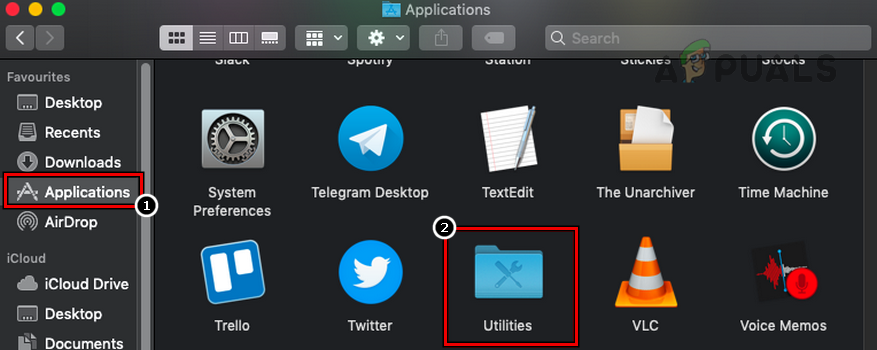
Open Utilities in the Mac’s Applications - Then, in the right pane, open Utilities and launch the Activity Monitor.
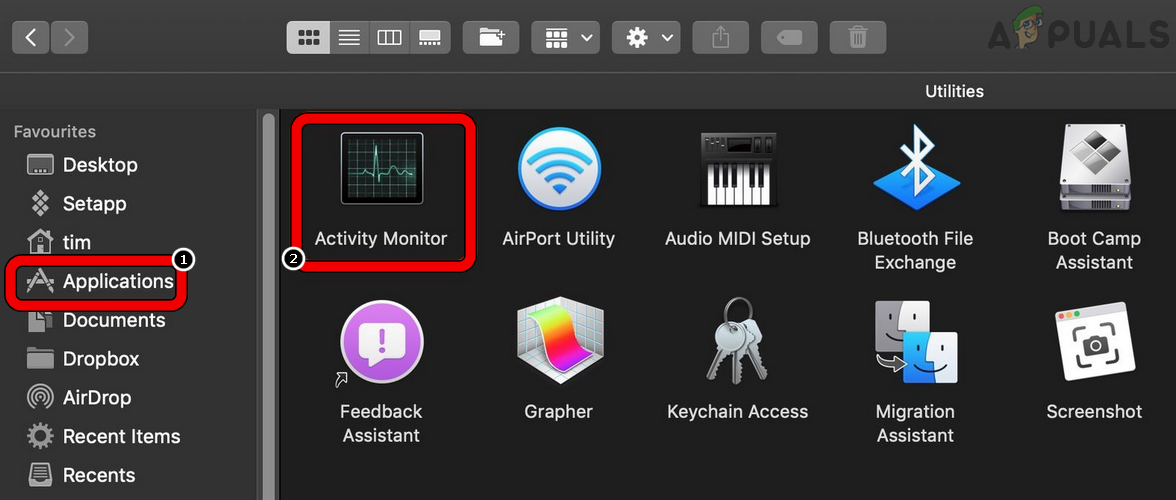
Open Activity Monitor in Applications - Now, sort its View to All Processes and then sort the processes through %CPU.
- Now open the first process (like Chrome) and click on Force Quit.

Force Quit Chrome on the Mac - Then confirm to Force Quit the first process and repeat the same on all the CPU intensive processes to force quit them.
- Now sort the Activity Monitor by Memory usage and then force quit all the memory intensive processes as well.
- Then press the power (Touch ID) key to shut down the Mac forcefully and wait till the MacBook has powered off.
- Afterward, power on the Mac and check if it is clear of the application memory error.
If not, please note down the processes/applications showing high memory/CPU usage as you will need those later to solve the problem. You can also sort the virtual memory hogging processes (in the VSZ column) by executing any one of the following in the Mac’s Terminal:
ps ax -o vsz,pid,comm | sort -n or ps -o rss,vsz,ucomm -ax or ps -ax -ovsz,comm | sort -k2n
2. Update the OS of the Mac to the Latest Build
You may encounter the application memory error on a Mac if its OS is outdated as it can cause incompatibility between applications and the OS due to which the OS may fail to get the memory released from an application properly. In this case, updating the OS of the Mac to the latest build may solve the problem. Before proceeding, do not forget to backup your data on the Mac.
- Launch Mac’s System Preferences and open Software Update.
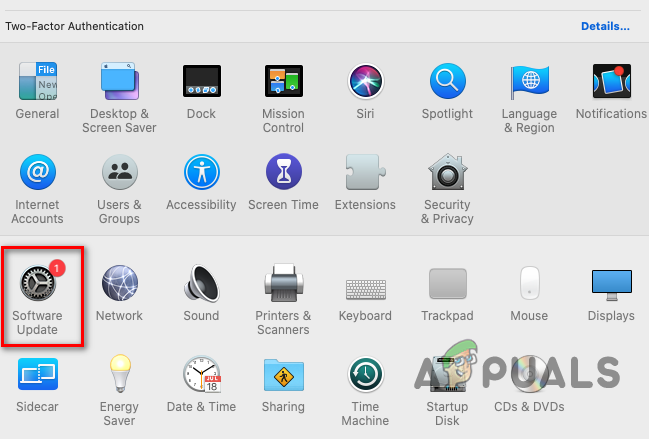
open Software Update in the Mac’s Preferences - If an OS update is shown, click on Update Now (or Upgrade Now) and wait till the macOS is updated to its latest build.
- Then restart your Mac and upon restart, check if Mac’s application memory issue is cleared.
3. Update the Problematic App to the Latest Build
If an app on your Mac is outdated, then it may cause incompatibility between the app and OS as the outdated app may not behave normally and keep on hogging the system’s memory, thus resulting in the issue at hand. In this context, updating the problematic app to the latest build may clear the application memory problem. You can check the memory hogging app in the memory tab of the Activity Monitor (discussed earlier). For illustration, we will discuss the process of updating the iMovie app to the latest build.
- Click on the Apple Menu and select Apple Store.
- Now, in the left pane, head to the Updates tab, and then in the right pane, check if an iMovie app update is available.
- If so, click on Update, or if you want to update all apps, click on Update All.
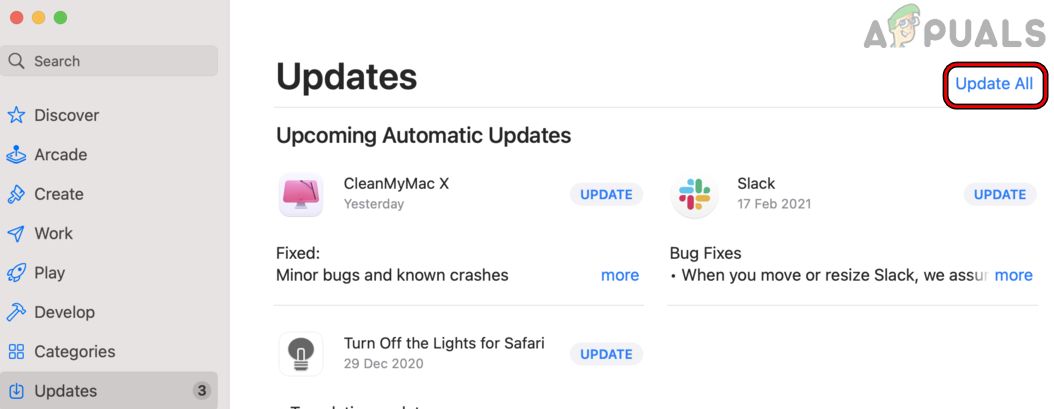
Update All Apps on Mac - Then wait till the update process completes and afterward, restart the Mac.
- Upon restart, check if the Mac is clear of your system has run out of application memory.
4. Reset the NVRAM and PRAM to the Defaults
Parameter RAM (PRAM) and Nonvolatile Random-Access Memory (NVRAM) hold different essential configurations of the Mac like sound or volume, display resolution, kernel information, startup-disk select, etc. If any of these configurations in the NVRAM and PRAM are corrupt, then that may cause an application memory issue at hand as the system may fail to perform the required actions as required by the OS or application. In such a case, resetting the PRAM and NVRAM to the defaults may clear the application memory issue.
- Power off the Mac and press/hold the undermentioned four keys:
Option, Command, P, R

Reset PRAM NVRAM - Then, wait for 20 seconds, and afterward, release the mentioned keys. On the Macs that play a sound on their start-ups, release the motioned keys when the start-up tone is heard for the second time. For T2-based Macs, release the mentioned keys when you see the Apple logo for the second time.
- Afterward, wait till the Mac powers on and then check if its memory problem is cleared.
5. Boot the Mac in the Safe Mode
If any of Mac’s startup items are incompatible with the OS or if any of the system’s caches that are essential for Mac’s proper operation are corrupt, then that may lead to the application memory error on a Mac. In this scenario, booting the Mac in the safe mode may solve the problem as the system is launched without any startup items and resets the system’s caches. The process to boot a Mac into its Safe Mode depends upon the type of the Mac (you can find the type in About This Mac in the Apple Menu).
5.1 For Macs with Apple silicon
- Expand the Apple menu and select Shut-Down.
- Now, wait till the Mac is completely off.
- Then press and hold Mac’s power button till the Loading Startup Options screen is shown.
- Now select the volume and press/hold the Shift key.
- Then click Continue for the Safe Mode and the Mac will boot into the Safe Mode.
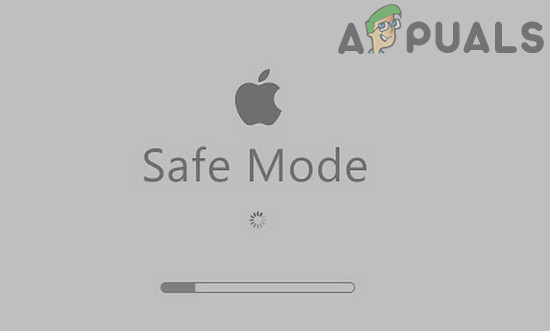
Boot the Mac in Safe Mode - Now check if the Mac is clear of the application memory error.
- Then boot the Mac into the normal mode (it may take around 5 minutes) and check if the Mac is working fine.
5.2 For Intel-based Macs
- Shut Down the Mac through the Apple Menu and Wait till the Mac is completely powered off.
- Now power on the Mac and quickly, hold the Shift key till Mac’s login screen is shown.
- Then log into the Mac and check if the application memory issue is cleared.
- Now boot the system into the normal mode (it can take around 5 minutes) and check if Mac’s application memory problem is solved.
6. Remove Login Items of the Mac
If any of the Login Items is conflicting with the Mac’s OS and hogging the system’s memory, then that may lead to the application memory issue at hand, and clearing the login items of the Mac may solve the memory issue.
- Launch Mac’s System Preferences and open Users and Groups.

Open Users & Groups in Mac’s System Preferences - Now select your account name and head to the Login Items.
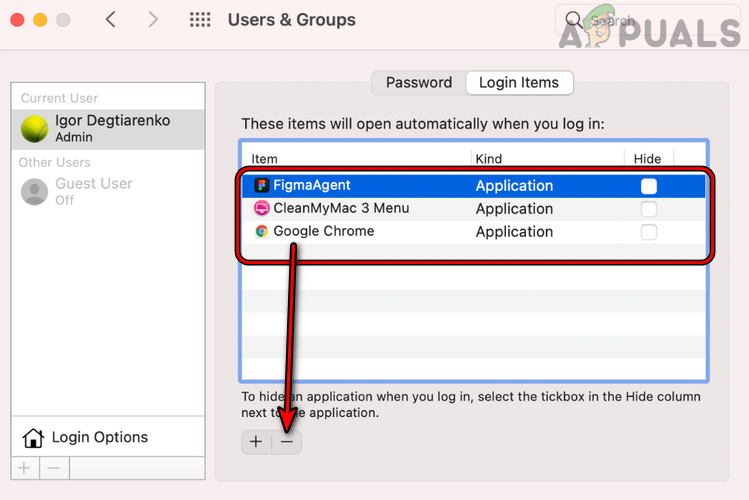
Remove Login Items on Mac - Then click on the Minus sign to remove an item from the list.
- Now repeat the same to all other login items and then restart the Mac.
- Upon restart, check if the Mac is operating fine. If so, then you may add back the Login Items one by one till the problematic one is found, and once found, you may keep it disabled on the system’s boot or remove it.
If the issue persists after removing the startup items, check if mounting Mac’s recovery volume and making the Time Machine backup to an external drive resolves the issue.
7. Reset the Mac’s Cursor Options to the Defaults
Some web browsers may show a memory leak (due to a reported macOS bug) leading to the application memory error on a Mac if Mac’s cursor options (cursor size, color, etc.) are not set to defaults. Here, resetting Mac’s cursor options to its defaults may clear the issue at hand.
- Launch the System Preferences of your Mac and open Accessibility.
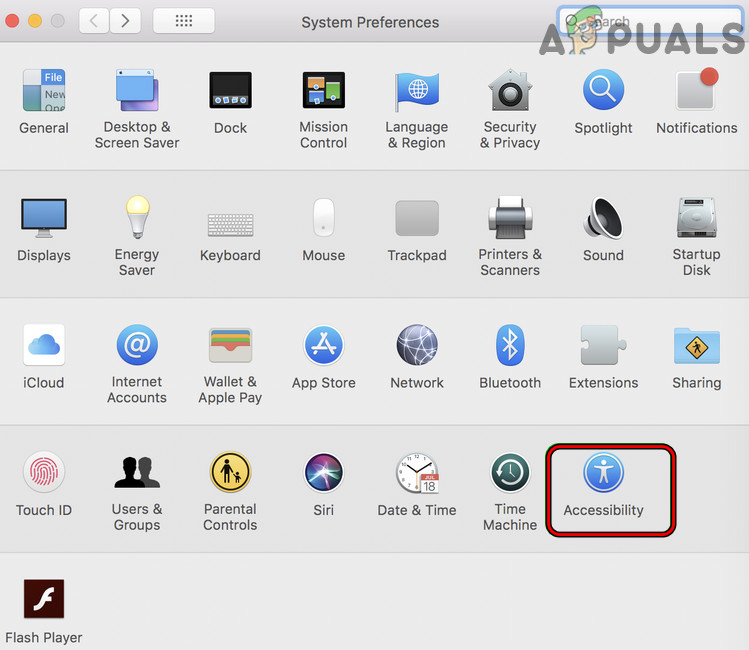
Open the Accessibility Settings on the Mac - Now, in the left pane, head to the Display tab, and then, in the right pane, steer to the Pointer tab.
- Then tick the checkbox of Shake Mouse Pointer to Locate and set the Pointer size to Normal.
- Now set the Pointer Outline Color to White and Pointer Fill Color to Black. You can also click Reset to reset the outline and fill colors back to their defaults.
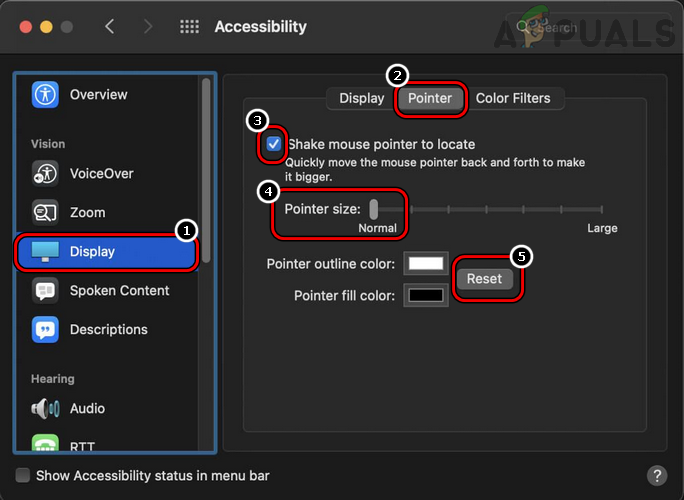
Reset Pointer Options on the Mac to Defaults - Then restart your Mac and upon restart, check if Mac’s application memory problem is cleared.
8. Repair Disk Permissions of the Mac
A Mac might show the application memory error if its disk permissions are glitched out and are not letting the apps/OS properly access a system resource (like a swapfile). In such a case, repairing the Disk Permissions of the Mac may solve the memory problem.
- Head to Applications through the Finder and open Utilities.
- Now open Disk Utility and then, in the left pane of the Disk Utility, select the system partition of your Mac (usually, labeled as Macintosh HD).
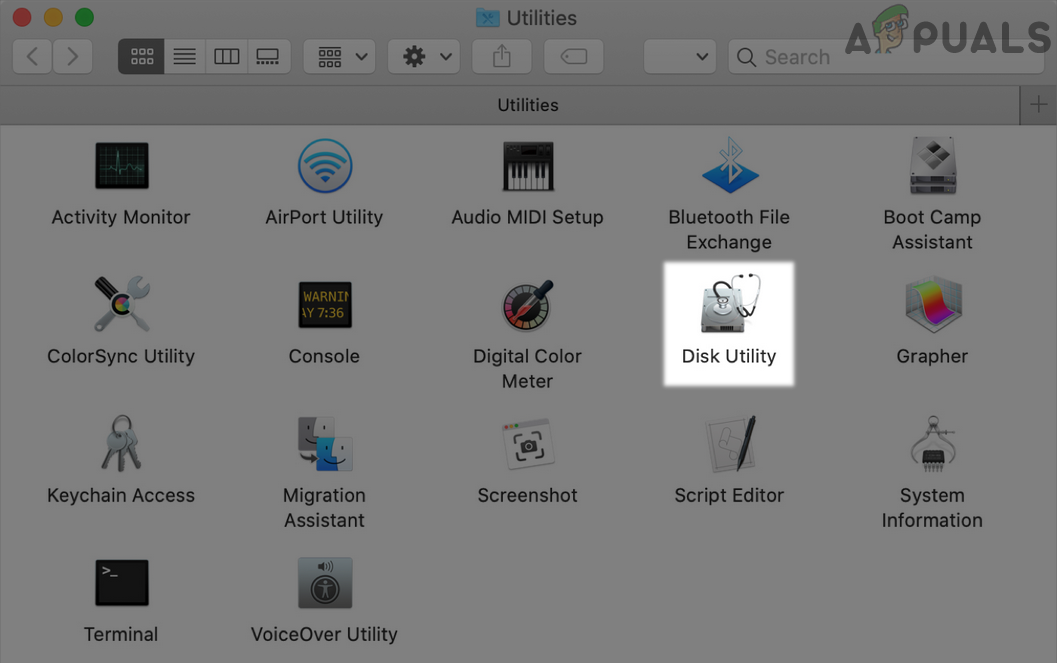
Open Disk Utility in the Mac’s Utilities - Then, in the First Aid tab of the right pane, click on Repair Disk Permissions and wait till it is done.
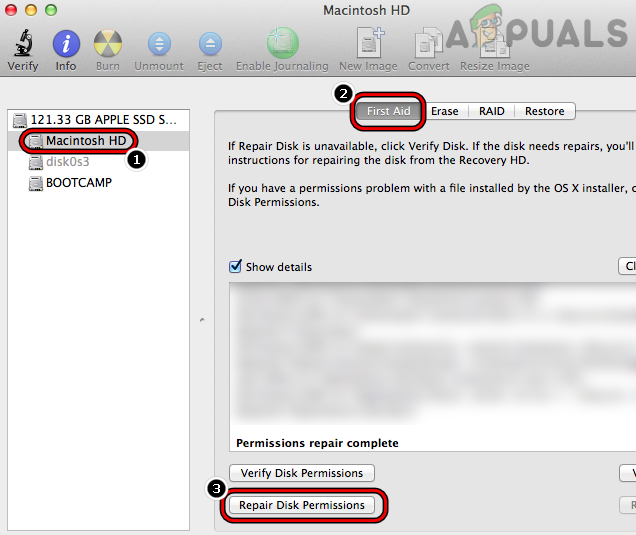
Repair Disk Permissions on the Mac - Afterward, restart the Mac and check if Mac’s application memory problem is solved upon restart.
9. Remove the Conflicting Browser Extensions
If a browser extension is incompatible with the Mac’s OS modules and causes excessive memory usage, then that may result in the application memory issue on the Mac. In this case, removing the conflicting browser extensions may solve the problem. For illustration, we will discuss the process of removing a Safari extension. The Rakuten and Dark Reader extensions are reported ones to cause the issue.
- Launch the Safari browser and expand its Safari menu.
- Now select Preferences and in the top navigation bar, head to the Extensions tab.
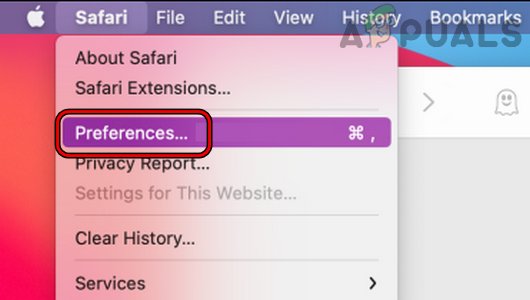
Open Safari Preferences - Then, in the left pane, select the problematic extension and untick its checkbox.
- Now, in the right pane, click on the Uninstall button and then confirm to uninstall the extension. If the extension is a part of an app, then you may have to remove the app by clicking Show in Finder and moving the app to the Recycle Bin.

Uninstall Safari Extension on Mac - Once the extension is removed, restart the Mac and upon restart, check if the issue was resolved.
- If not, check if disabling/removing all the browser’s extensions one by one (to find out the problematic one) solves the problem.
10. Clear the Browser History and Data
You may also encounter the Mac memory issue at hand if a browser item (like a cookie, cache, etc.) is causing the excessive use of the system’s memory. In this context, clearing the browser’s history and data may clear the memory error at hand. For elucidation, we will go through the process of clearing the Safari history and data.
- Launch the Safari browser and expand its History menu.
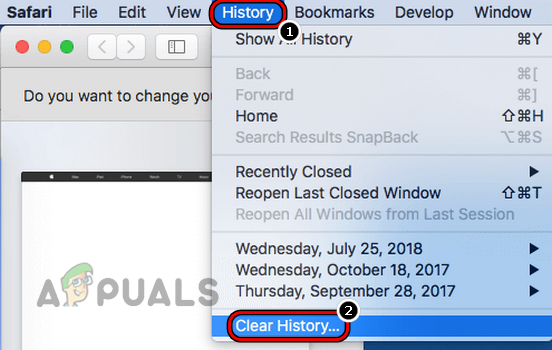
Open Clear History on the Mac - Now select Clear History and in the pop-up menu shown, select the timeframe of All History.
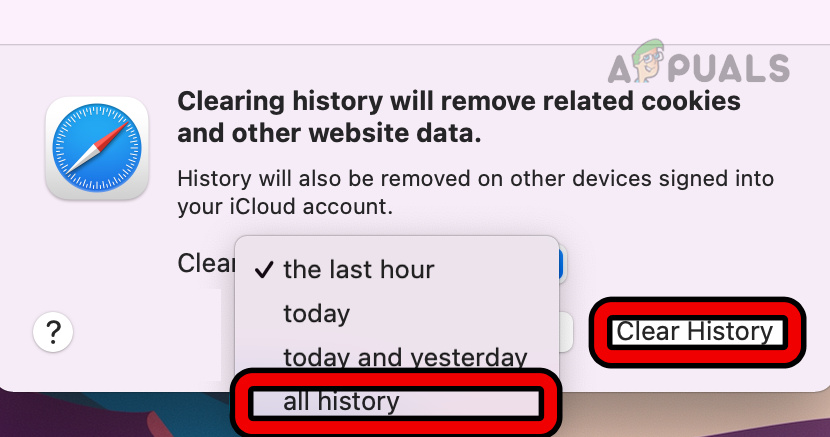
Clear All History of Safari on the Mac - Then click on the Clear History button and afterward, restart the Mac to check if it is clear of the application memory error.
11. Delete the Calendar Cache
If Activity Monitor is showing excessive memory usage by the calendar (CalendarAgent process), then the corrupt calendar cache could be the root cause of the issue at hand. Here, deleting the calendar cache may solve the problem.
- Open the iCal app and make sure to create a Full Archive backup of the calendars.
- Now close the iCal app and open Finder.
- Then expand the Go menu and select Go to Library.
- Now open the Calendar folder and delete the Calendar Cache. There may be more than one file of the calendar cache and you may delete all of them.
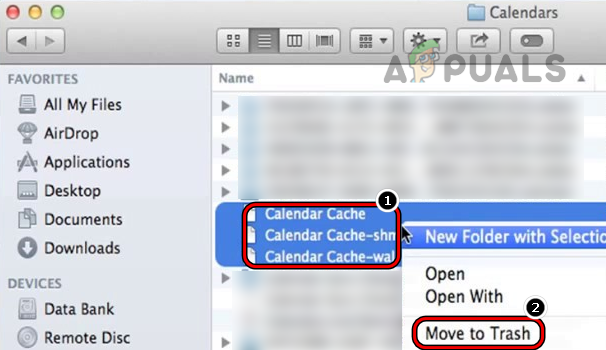
Delete Calendar Cache on the Mac - Then empty the Trash and restart the Mac.
- Upon restart, check if the Mac is clear of the memory issue. Afterward, you may set up the calendars again on your Mac.
12. Delete the Address Book Data from the Mac
If the Activity Monitor is showing excessive memory usage by the Address Book (AddressBookSourceSync process), then the corrupt Address Book data could be the root cause of the application memory issue. Here, deleting the address book data from the Mac may solve the problem. Before proceeding, make sure to back all the contacts to a vCard file.
- Launch Finder and head to the Application Support directory in Library.
- Now delete Address Book and then restart your Mac.
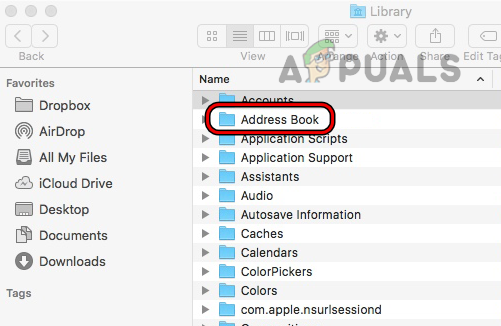
Delete Address Book Folder in the Mac’s Library - Upon restart, launch Mac’s System Preferences and open iCloud.
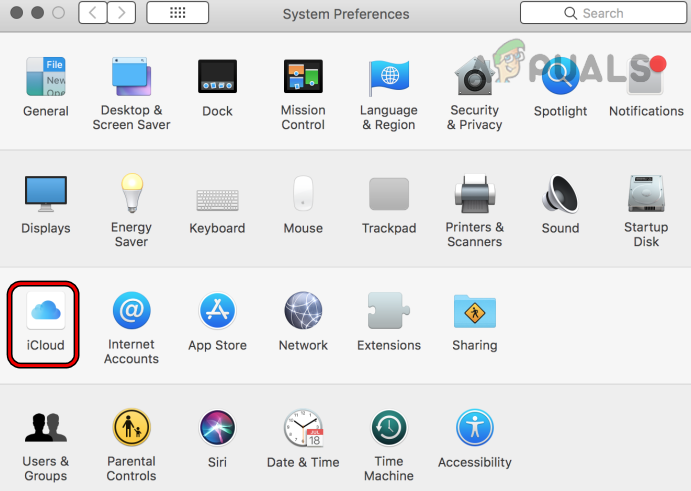
Open the iCloud Settings in the Mac’s System Preferences - Then enable Contact Syncing and if it is already enabled, disable, then enable it.

Enable Contacts Sync in the Mac’s iCloud Settings - Afterward, select Merge Data (if asked to) and then check if Mac’s application memory issue is resolved.
13. Launch the Mail App in the Clear State
If the Activity Monitor is showing that the Mail app on the Mac is using excessive RAM, then the corrupt configurations or data of the Mail app may cause the issue at hand. Here, launching the Mail app in a clear state may solve the problem.
- Launch the Mail app and open the Mail menu from the menu bar.
- Now select Quit Mail and then expand the Apple Menu.

Quit Mail on the Mac - Now click on Restart and upon restart, hold the Shift key and click on the Mail to launch the app in the clear state (without using the Saved data).
- Once the Mail app is launched, check if the Mac is clear of the application memory issue.
- If not, Archive All Mail by Control-Clicking folders and exporting them as Mbox files.
- Now quit the Mail app (as discussed earlier) and launch the Mac Finder.
- Then head to the Mail folder in Mac’s Library and copy the Mail folder to another location or drive.
- Now delete the Mail folder from Library and then delete Internet Accounts.

Delete the Mail Folder in Mac’s Library - Then restart the Mac and upon restart, launch the Mail app and use the new mail accounts menu to add the email accounts to the Mail app.
- Afterward, use the Import Saved Mail to import the old data (backed up earlier) which will appear under the Import folder, and then check if the Mac has started to work fine.
14. Uninstall the Problematic App
An application may show a memory error on a Mac if the app’s installation itself is corrupt or is in conflict with other apps/OS modules. In this case, uninstalling the problematic app (you may opt to reinstall it later) may clear the application memory error.
As there are too many apps that may cause the issue and it is not possible to cover all of them here. You can check the problematic app in the Activity Monitor but it is not always the one using the maximum memory and can be caused by another application or process. The majority of applications reported were auto-cleaners, optimizers, VPNs, virus scanners, etc. If you have any of such apps, you may uninstall them to solve the problem. For illustration, we will discuss the process of uninstalling Kaspersky on a Mac.
- Launch Kaspersky on the Mac and expand its Help menu.
- Now select Support and click on the Uninstall button.

Open Support in the Help Menu of the Kaspersky on the Mac - Then confirm to uninstall Kaspersky and follow the prompts on the screen to complete the uninstallation of Kaspersky.

Uninstall Kaspersky on the Mac - Once uninstalled, restart your Mac, and upon restart, remove the browsers’ Kaspersky extensions (discussed earlier).
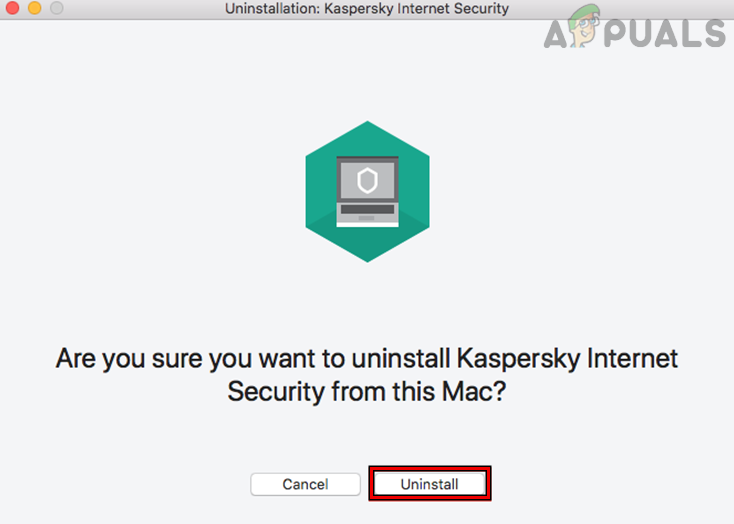
Confirm to Uninstall Kaspersky on the Mac - Afterward, restart your PC, and upon restart check, if the Mac is clear of the memory problem. If so, then you may reinstall the problematic app but be careful, the problem may re-emerge and if it does, you may have to uninstall the app, till the issue is resolved by the developer.
15. Perform a Malware or Virus Scan on the Mac
A Mac may show an application memory error if it is infected with a virus or malware as it can cause high usage of the system’s memory and performing a malware or virus scan on the Mac may solve the problem.
- Firstly, close all the unwanted processes in the Mac’s Activity Monitor and then uninstall all the unwanted/risky apps.
- Then remove all the malicious browser extensions that are not essential and not from a reliable source.
- Now remove all the non-essential items from the Login Items and afterward, use a virus or malware scanner (like Malwarebytes) to remove any malicious items from the Mac.
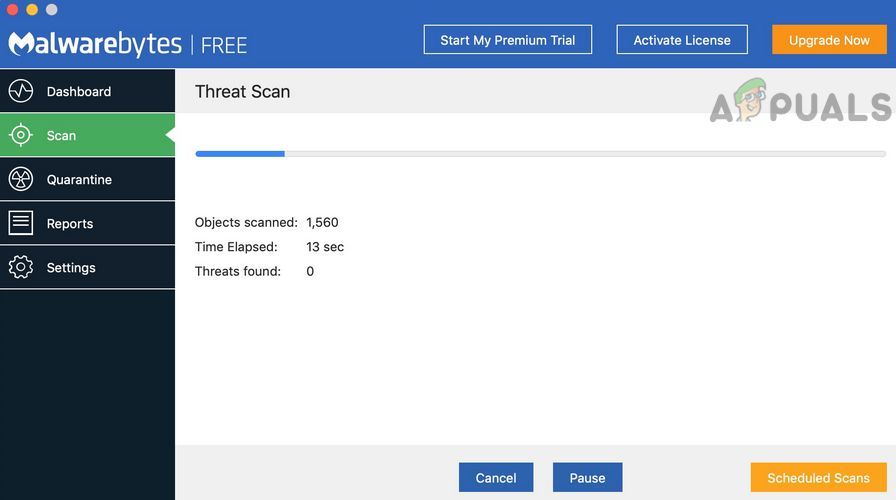
Perform a Malware Scan on the Mac Through the Malwarebytes - Then delete all the malicious emails from the mailboxes or if that is not possible, remove the mailbox from the Mac and use the web version of the mail to delete the malicious emails.
- Once the Mac is clear of viruses or malware, check if its application memory issue is cleared.
16. Create a New User Account on the Mac
You may encounter the application memory problem on a Mac if your user account on the Mac is corrupt and this account corruption is making the apps/OS behave abnormally, leading to the issue under discussion. In this case, creating a new user account (preferably, an administrator one) on the Mac may solve the problem.
- Launch the System’s Preferences on your Mac and open Users & Groups.
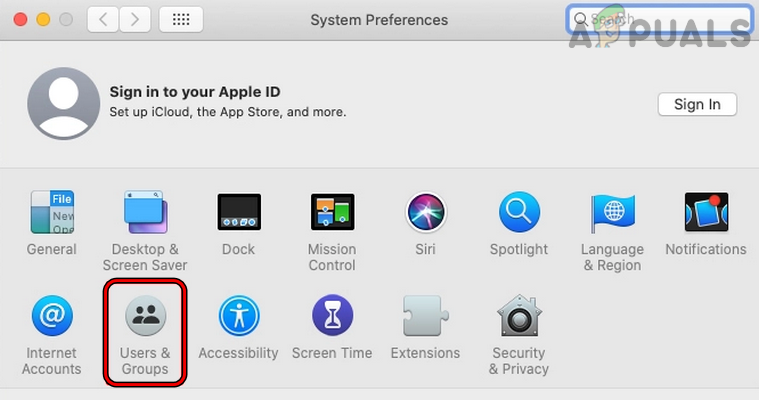
Perform a Malware Scan on the Mac Through the Malwarebytes - Now, near the left bottom corner, click on the padlock icon and enter the administrator password.
- Then, just above the padlock icon, click on the Plus sign and enter the new account info as per your requirement. It will be better to create a new administrator account.
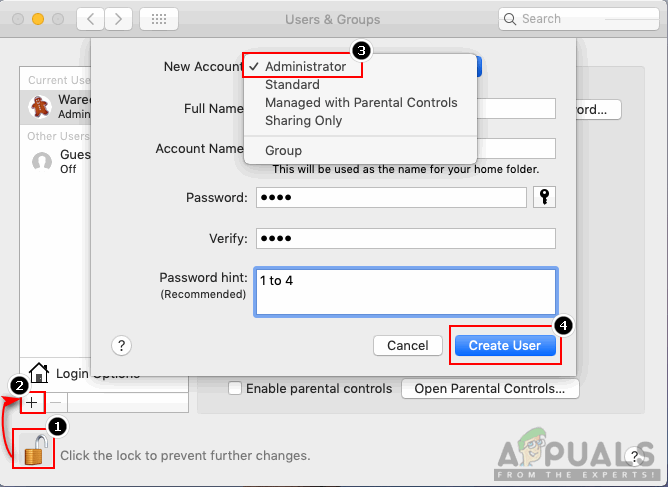
Create a New Administrator User on the Mac - Once the new account is created, log out of the current user account and log into the new Mac user account.
- Then check if the Mac is clear of the application memory error. If so, you may transfer the data from the old account to the new Mac user account.
17. Reinstall the macOS Without Deleting Data
You may encounter the application memory issue on a Mac if the latest update or patch failed to apply properly on the system and has corrupted some essential OS modules. In this scenario, reinstalling the macOS without deleting data may clear the memory issue. Although, the process is generally safe but to avoid a catastrophe, make sure to back up Mac’s data.
- Firstly, boot your Mac into its recovery partition. For Apple Silicon Mac, power on the Mac, keep holding the power button till Startup Options are shown, select Options, and click on Continue. For Intel-based Macs, power on the Mac and immediately hold CMD + R buttons till the Apple logo is shown on the screen.
- Now select the administrator account of the Mac and enter its password.
- Then click on Reinstall macOS (version name) and press the Continue button.
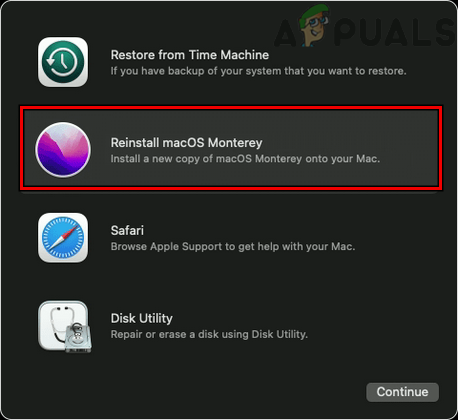
Reinstall macOS Monterey - Now, select Continue on the macOS Installer screen and agree to Apple’s TOS.
- Then select your Mac’s boot volume (usually, titled Macintosh HD) and click on Continue.
- Now, wait till the process completes (may take around an hour), and afterward, hopefully, the application memory on your Mac is cleared.
If not, then performing a clean reinstallation of the macOS or reverting to an older version of the macOS may solve the problem. If the issue persists, then check Mac’s hard drive health as a failing hard drive can cause the application memory issue on a Mac.





